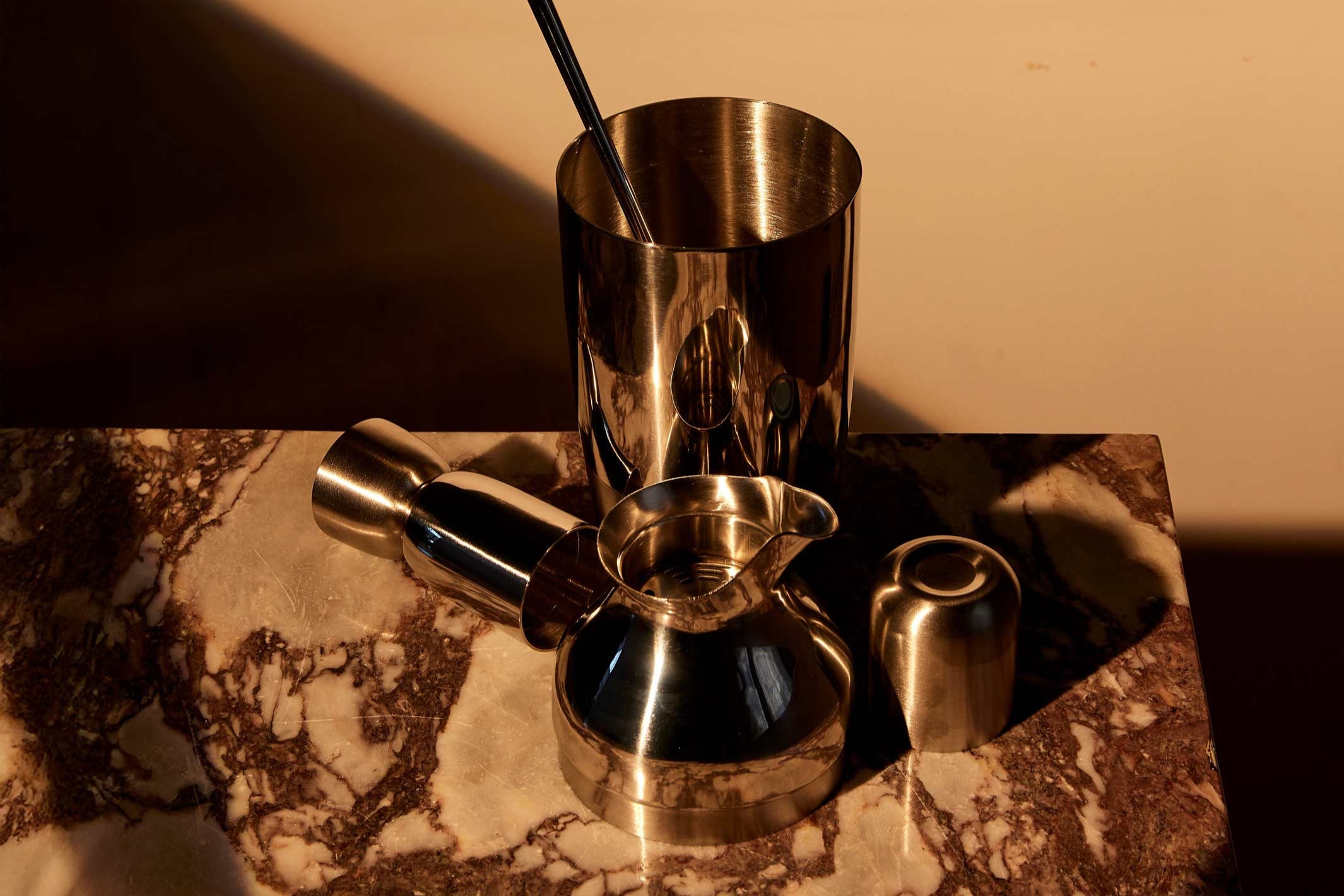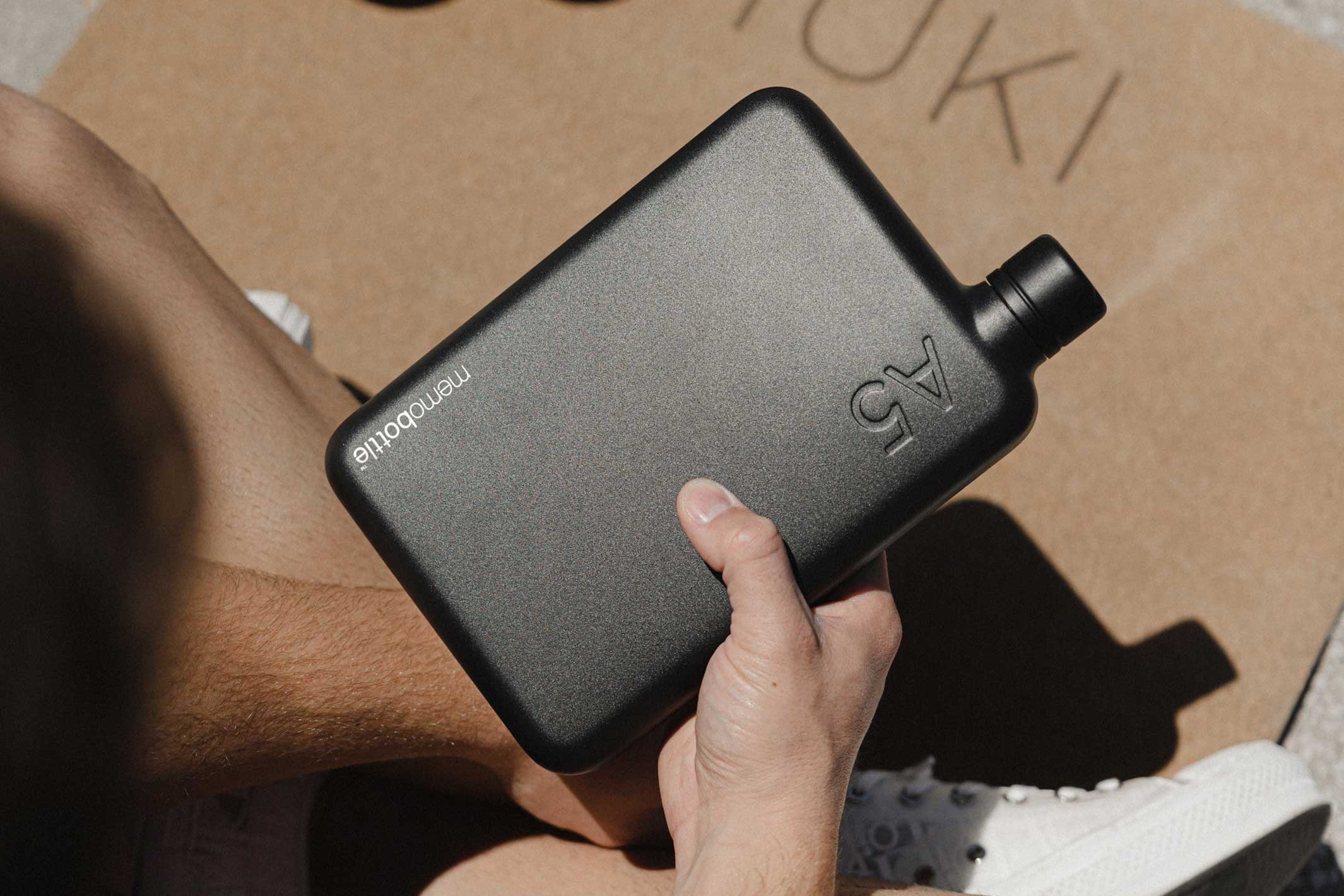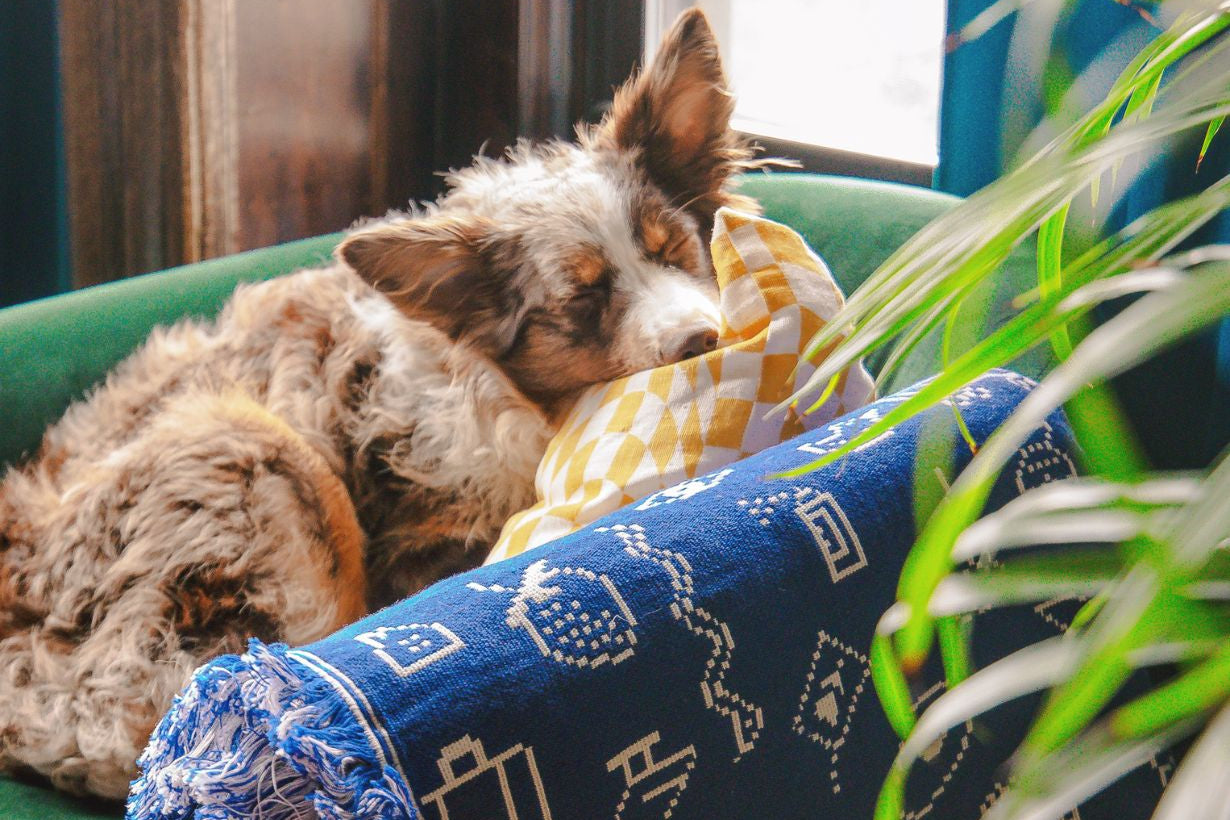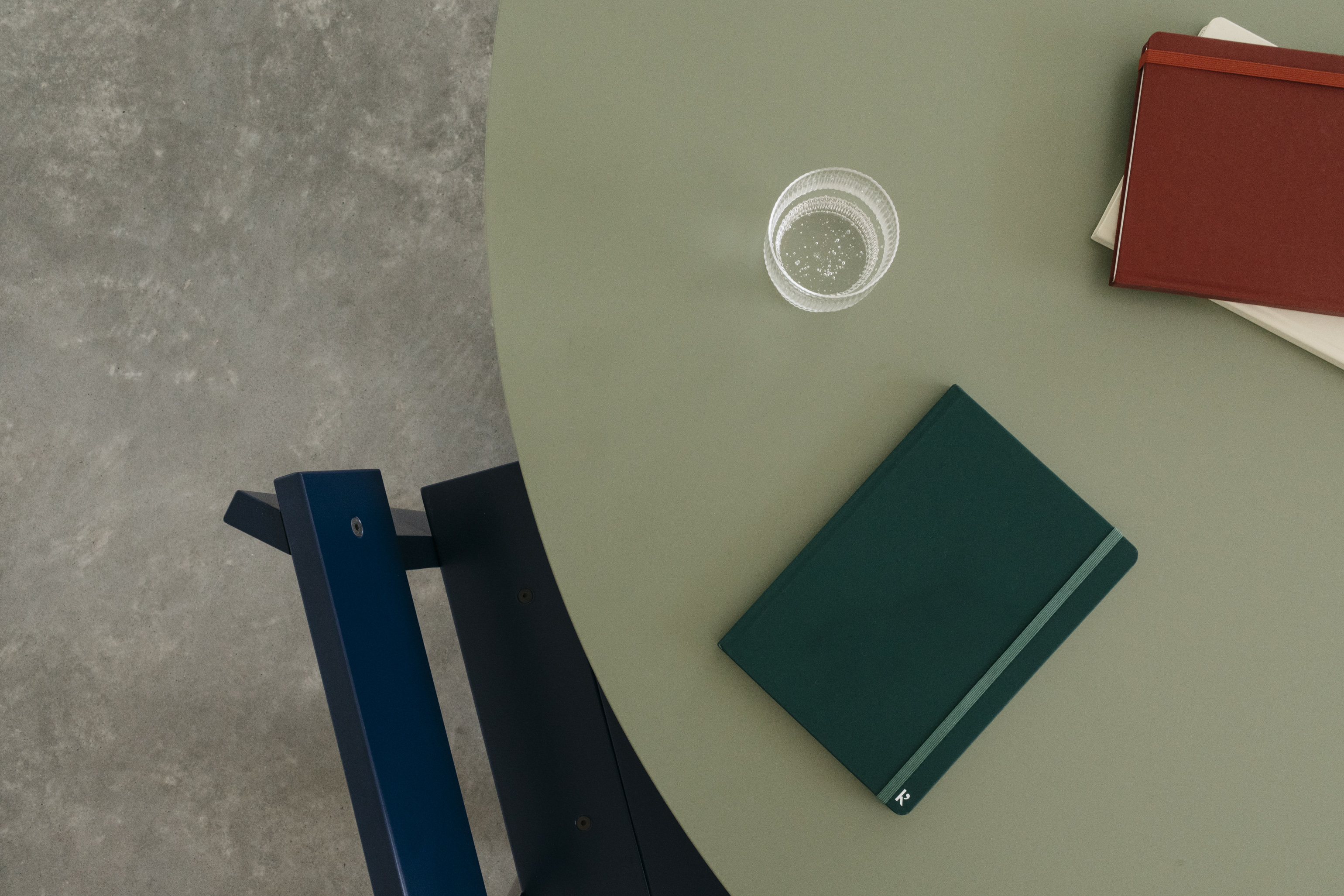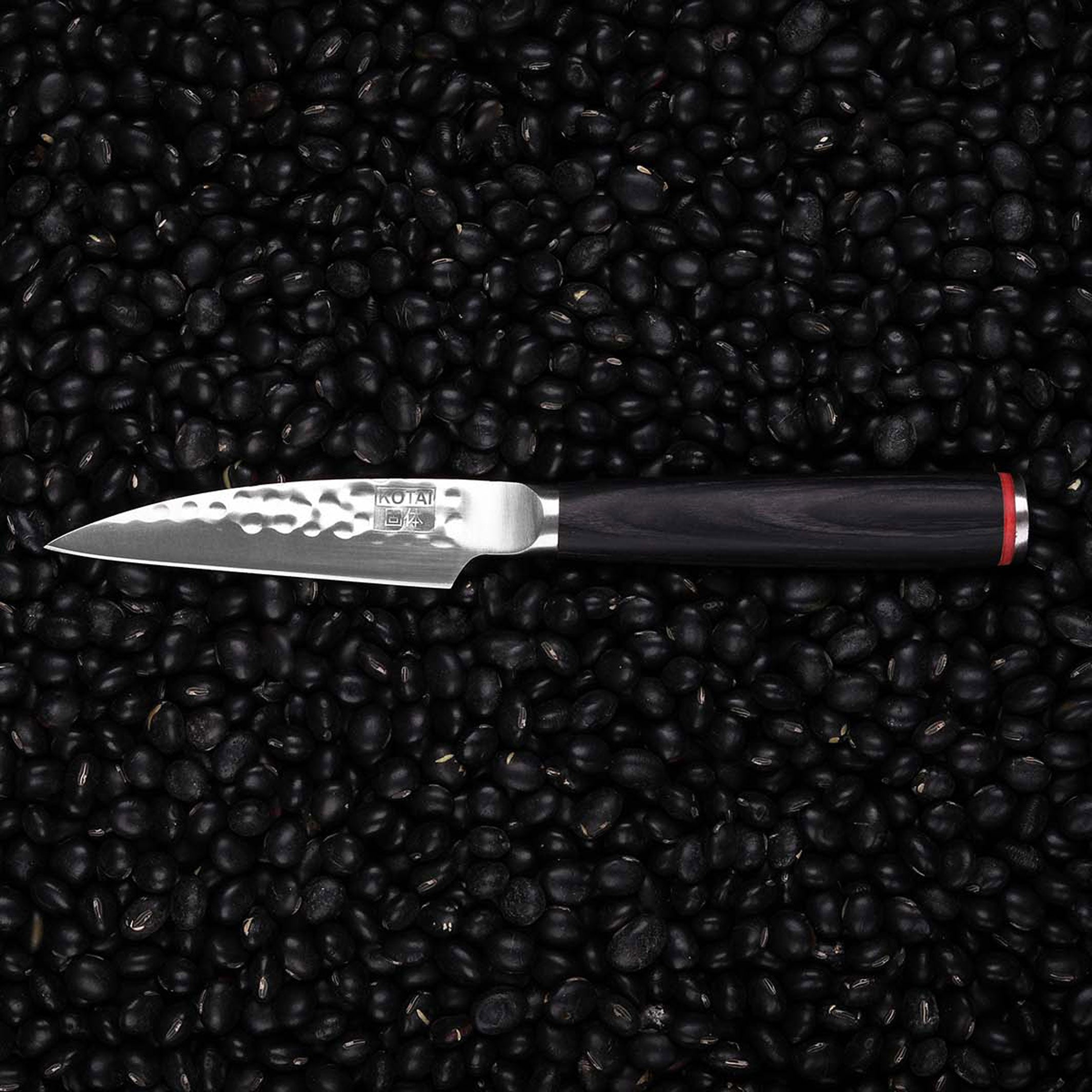
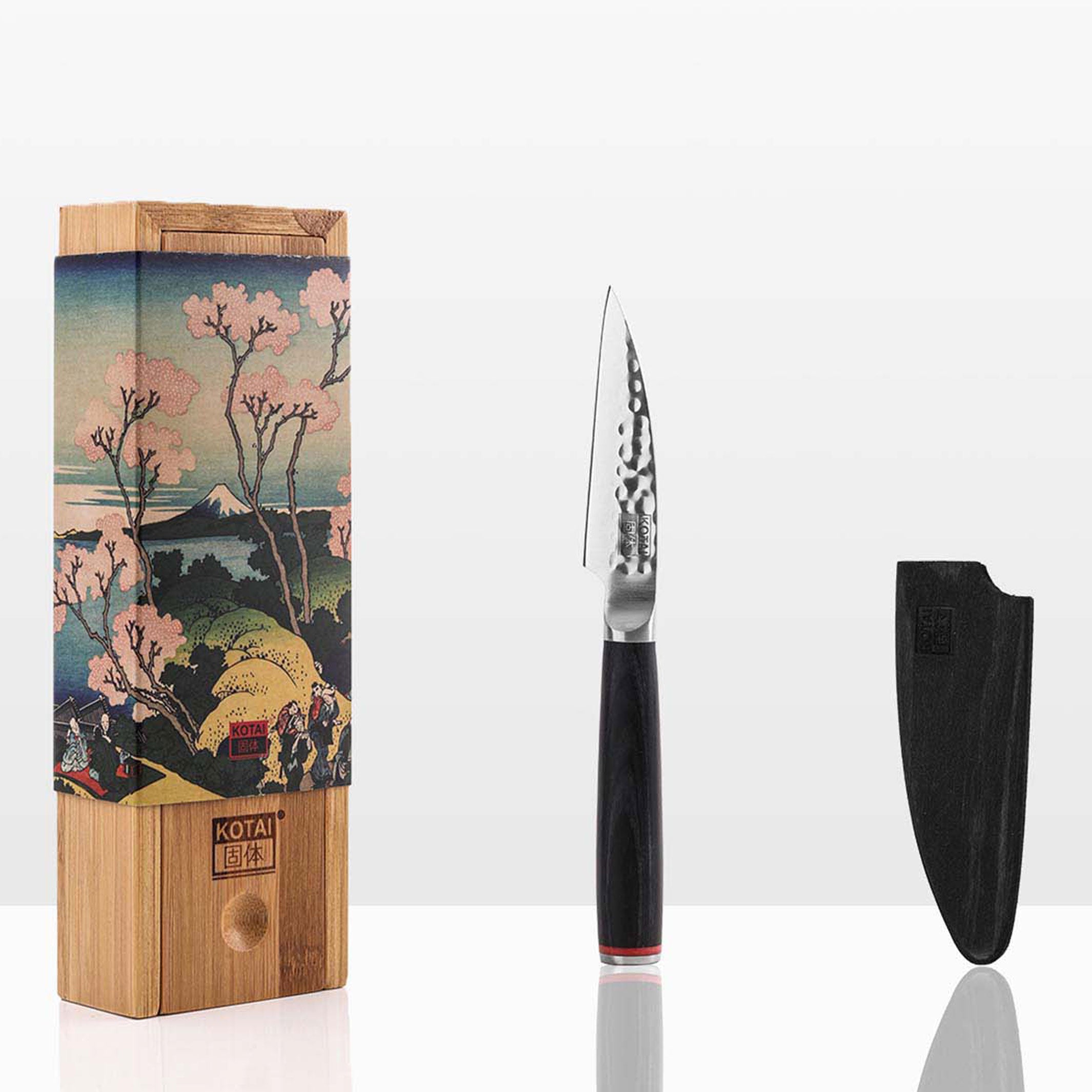
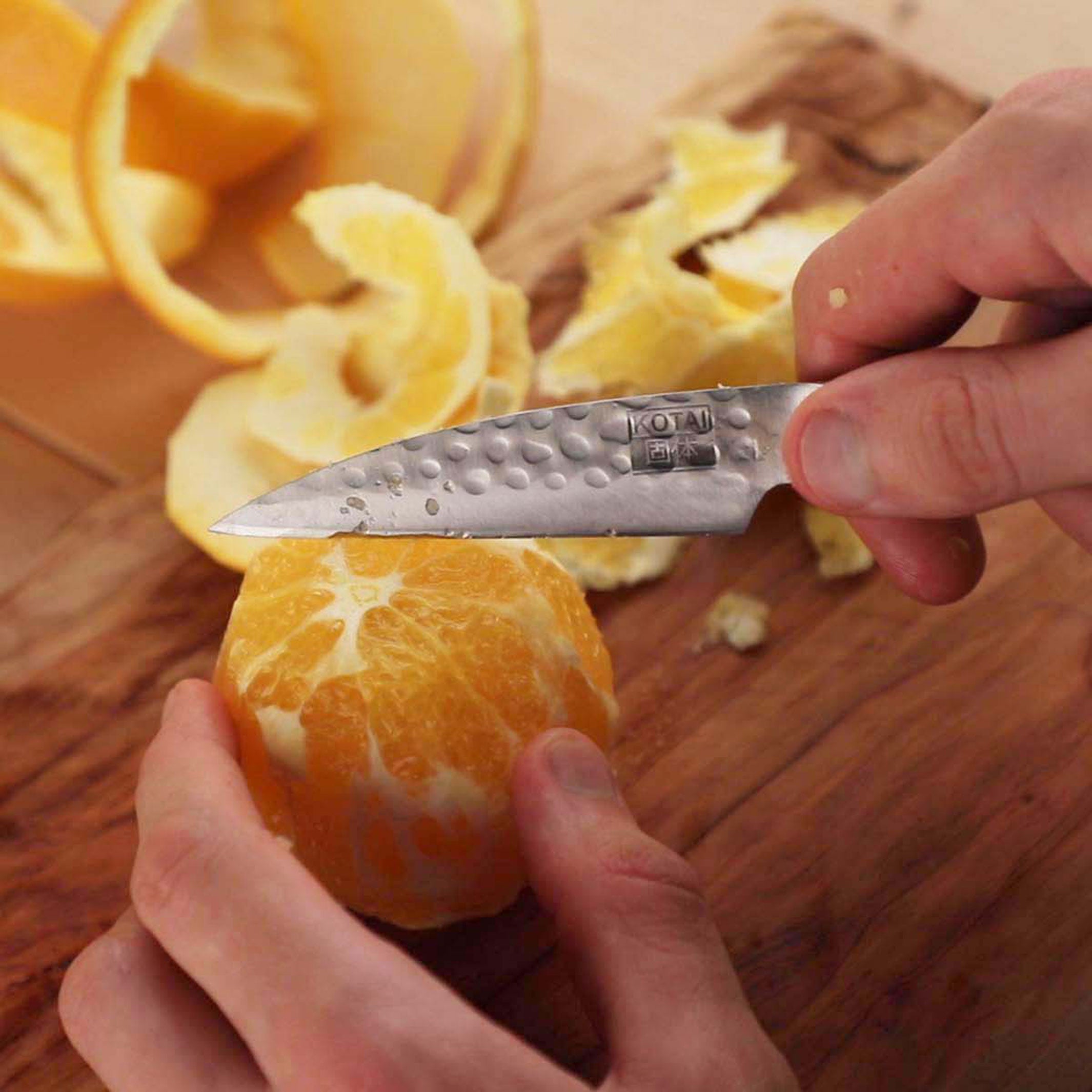
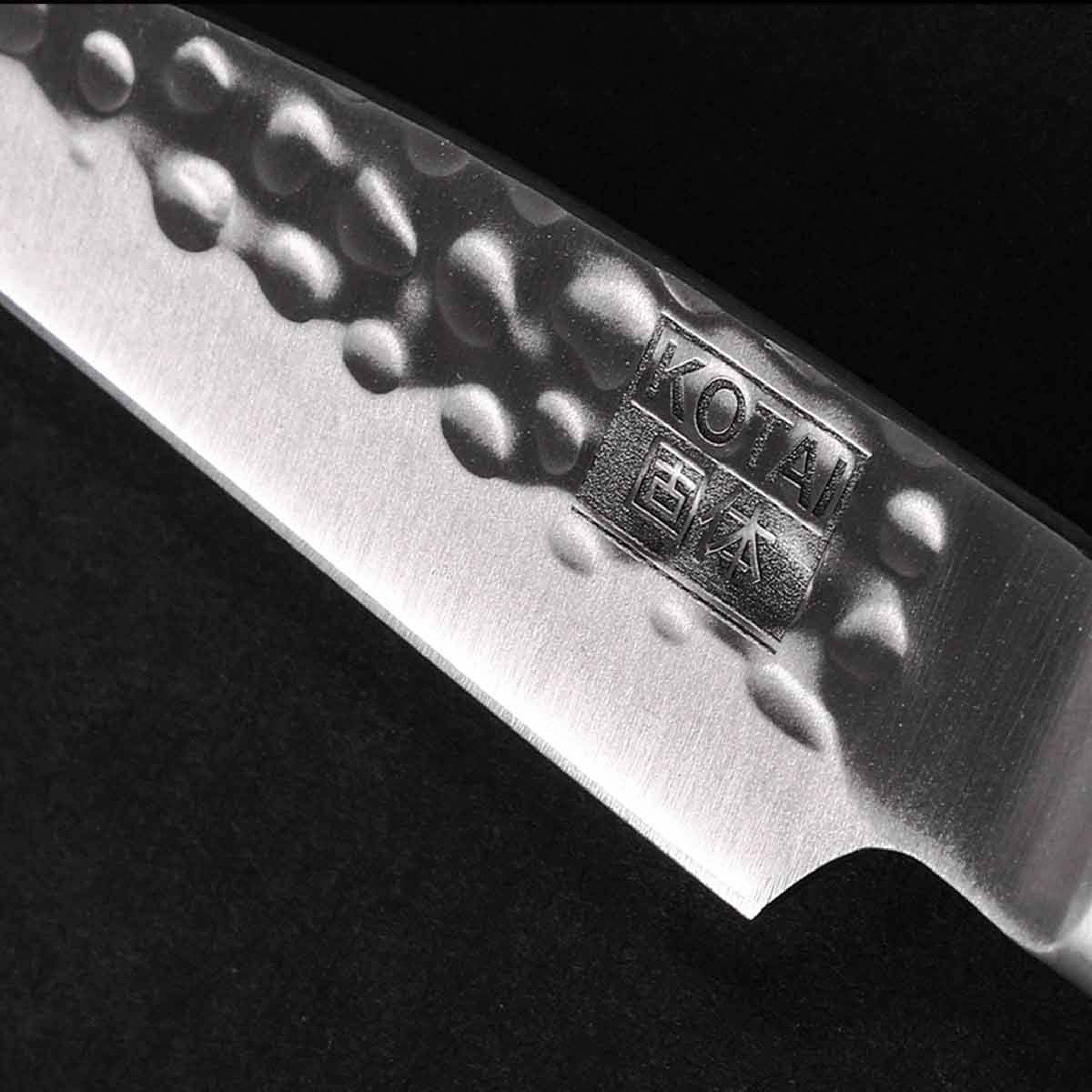
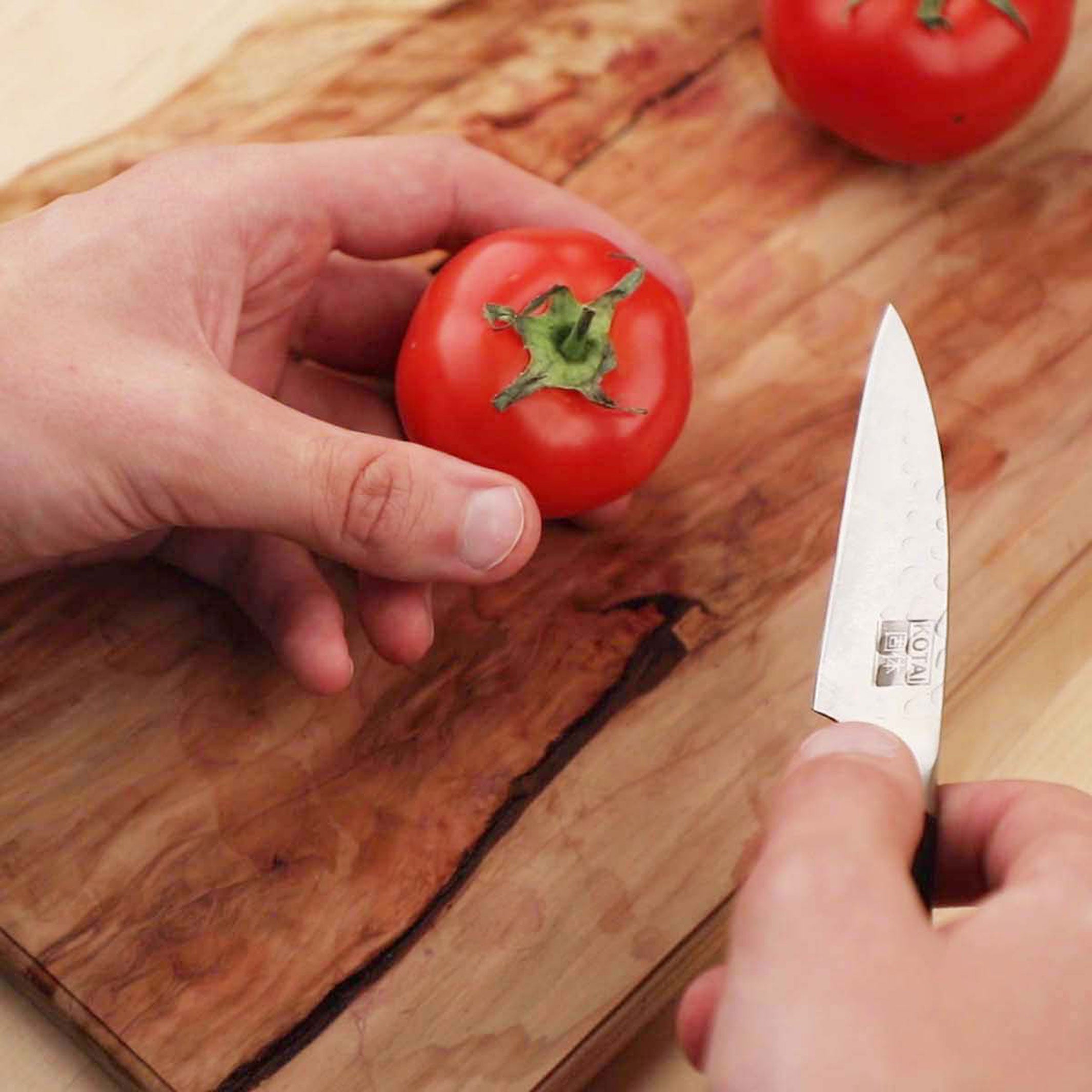
PARING KNIFE | wooden saya & bamboo gift box | 9cm blade | Kotai
VAT included. Shipping calculated at checkout
Description
The paring knife is the most-used knife in a kitchen, right after the chef knife.
- 100% handmade
- Ultra-sharp Japanese 440C high-carbon stainless steel
- Hidden full tang
- Black pakkawood handle
- HRC hardness: 59-60
- Weight: 73g
- Perfectly balanced
- Stainless
- Wooden Saya (sheath or blade cover) included with each knife
- Lifetime warranty
While almost everything on the cutting board can be done with the chef knife, all precise, off-the-board cutting tasks are performed with the paring knife.
Kotai’s paring knife is a hybrid between a “sheep’s foot” and a “spear tip”. Its blade edge is mostly flat, allowing great precision and easy peeling, while its tip is slightly pointed for intricate coring tasks.
The “Tsuchime” 槌目 (hammered) pattern creates tiny pockets of air between the blade and the food being cut. This ancestral Japanese method reduces drag, thus preventing food from sticking to the blade.
Its 1.8 mm thin blade allows precise and sharp cuts, never crushing even the most delicate food to preserve its full flavor.
Technical details:
Blade length / total length: 9 cm (4") / 20 cm (8")
Weight: 73 g (2.6 oz)
Thickness at spine: 1.8 mm
Blade angle: 15˚, 50/50 symmetrical grind
Blade material: 440C high-carbon stainless steel
Blade hardness: HRC 60 +/- 1
Steel heat treatment: Cryogenic
Handle material: Black hand-polished pakkawood
Kotai was born as a bridge between Asian and Western cook cutlery. Lightweight, precise and ultra-sharp like a Japanese knife, yet stainless, robust and very durable like a German knife. All the advantages without the disadvantages, no compromises. "Kotai" means "solid" in Japanese; durability and performance are the defining values behind Kotai's creations.
Many would argue that Japanese knives are the best in the world, so why do so few Western chefs use them? After moving to Asia from his hometown in France - and determined to continue his passion for cooking - Kotai founder Jeremie Plane set out on a journey, but found that the knife world was basically split in two:
On one side - Japanese knives - sharp and beautiful, but also very delicate and high-maintenance.
On the other - Western knives - durable and rust-resistant, but not nearly as sharp as their Asian counterparts.
"I thought there had to be a better alternative. I became obsessed with the idea and started talking to countless bladesmiths, designers, steel engineers, professional chefs and regular home cooks. Some of them shared my frustration and joined the project."
Two years and a million prototypes later, KOTAI was born: light, precise and razor-sharp like a Japanese knife, yet stainless, durable and easy to maintain like a German knife. In short, a Japanese knife for the bosses of the West.
Care
Shipping & Returns
Germany - free shipping from 75 € order value
If you order our design products by 2 p.m., you will usually receive them within 1-2 working days.
All later orders on working days, which only contain products that can be delivered immediately, will be dispatched on the following working day
Europe
Products that can be delivered immediately will usually be with you within 4-6 working days.
How is my order shipped?
Your order will be shipped via our partners DHL & UPS within Germany and the EU.
How much are the shipping costs?
Within Germany, many orders are shipped free of charge. We charge a flat rate of €5.90 for the shipping of your order within Germany and shipping is free for you from an order value of €75.
The free shipping offer applies to standard shipping. The value of the goods after a possible return is decisive. If the value of the goods falls below €75 as a result of exercising your right of withdrawal, the shipping postage of €5.95 will be charged and offset against your refund for the return.
Bulky goods shipping costs of €19.95 may apply for individual items that exceed the standard package size. These will be calculated at check-out.
Shipping to most EU countries costs a flat rate of €9.90. All shipping details
How can I return products?
You can return ordered products up to 30 days after receipt of your order. More information
If you would like to return an item, send us an email to orders@charlesandmarie.com with the order number and information about which products you would like to return. Please pay for the return shipping - this of course does not apply to justified complaints.
A different delivery time is displayed
If a product can only be pre-ordered or is not in stock, it cannot be delivered immediately. In this case, you can find the deviating delivery time on the product page. As soon as we have the product available and dispatched again, you will receive it within the delivery times stated above.
Product compliance & safety
Manufacturer information & person responsible for product safety in the EU:

This product has no reviews yet.

